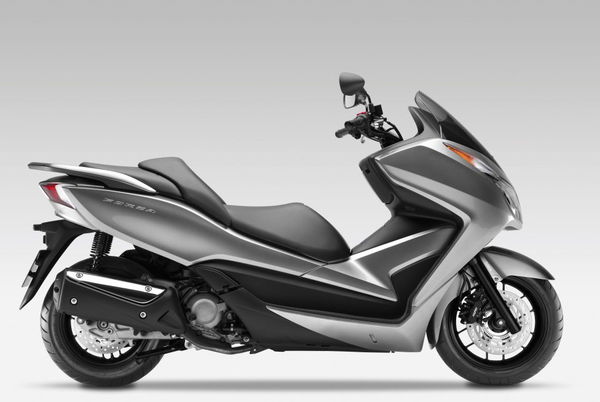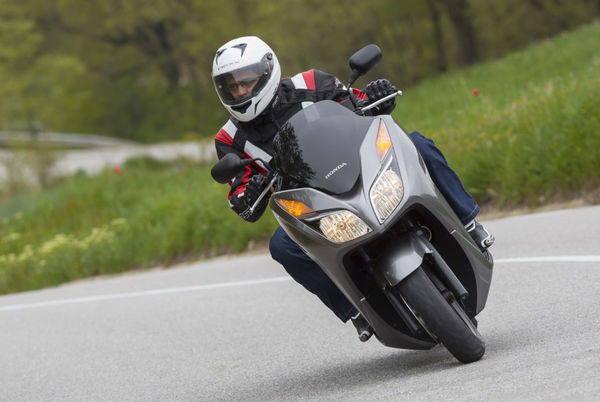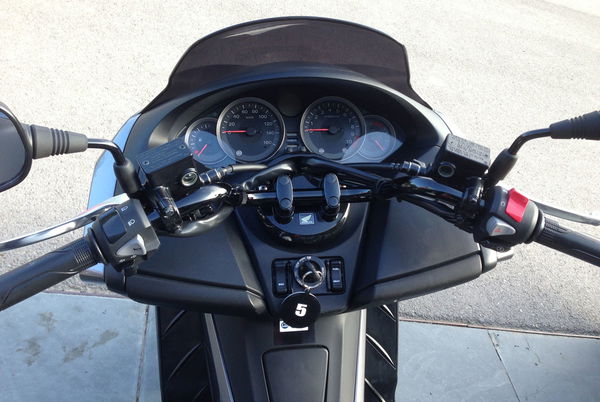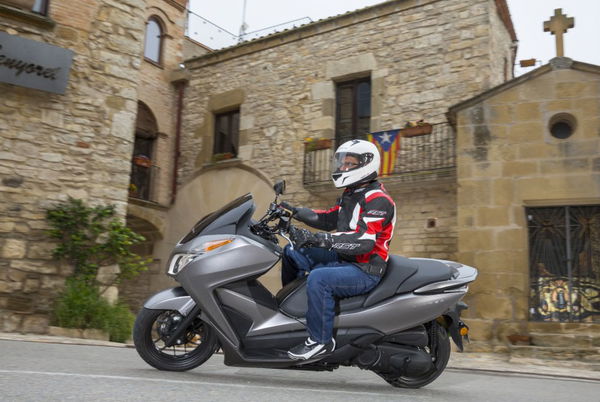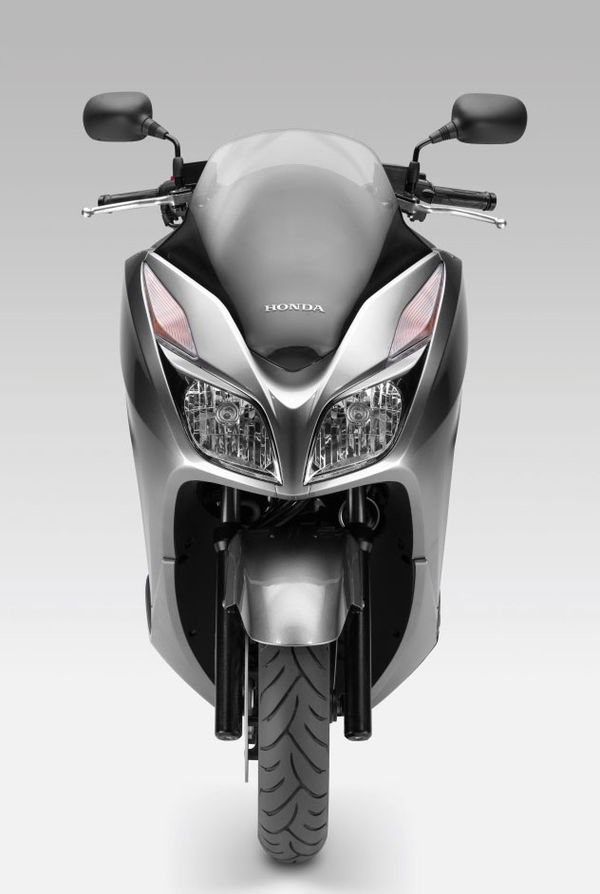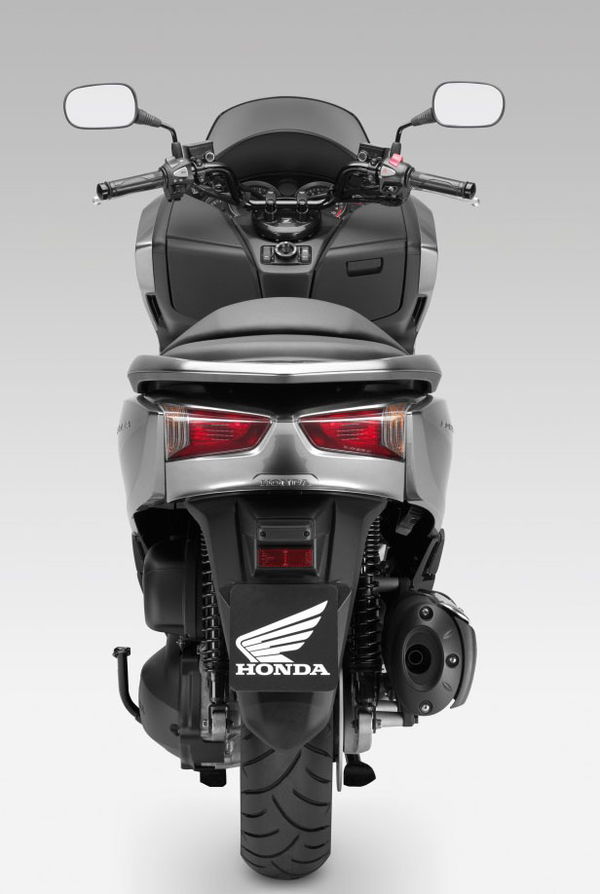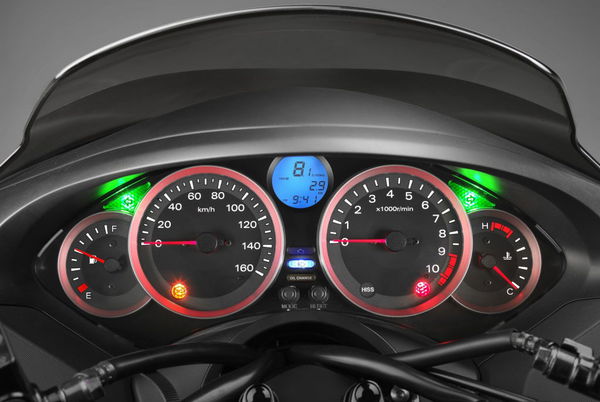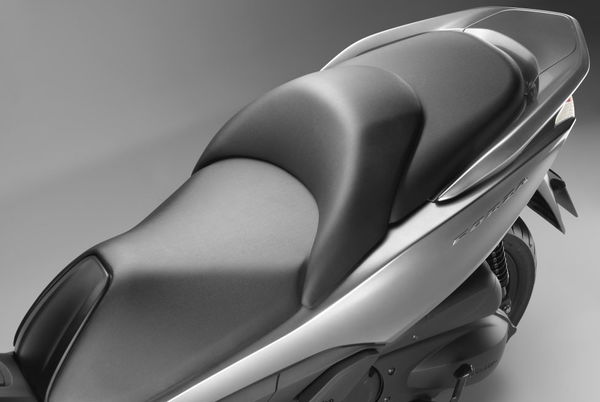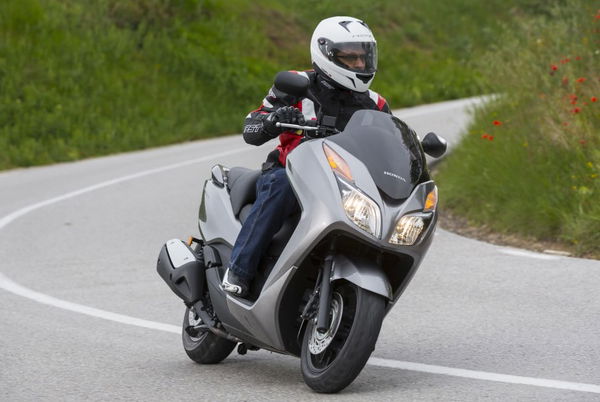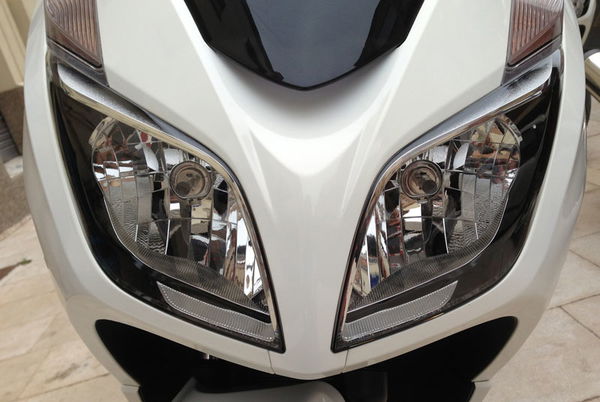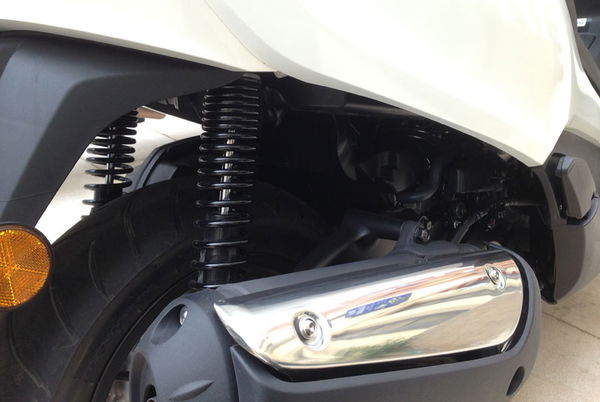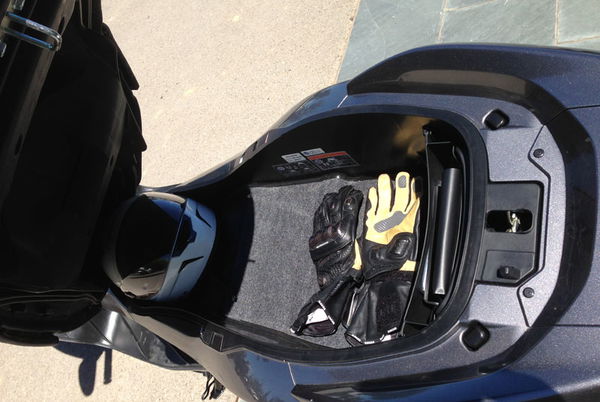First ride: Honda NSS300 Forza review
Honey, I've blown up the kid!
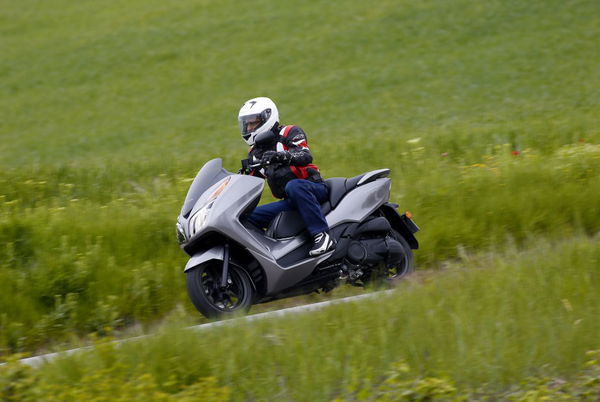
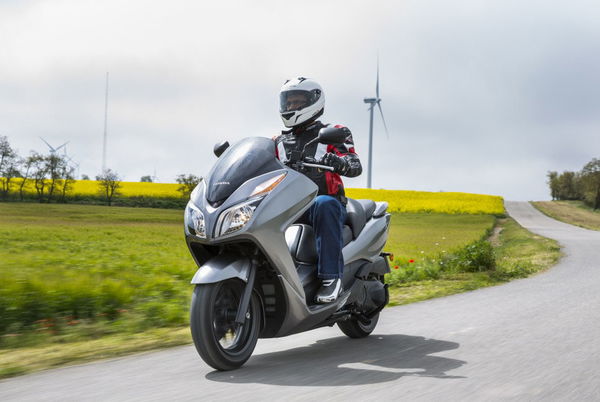
THE Honda PCX125 is the UK's best selling small scooter, with good reason. It's a smooth, nippy, agile little scoot; its swoopy looks are very up to the minute, and it's cheap to buy and run (90+ mpg). On the downside it's small and riding two-up is cramped, there's storage for only one helmet and say a pair of trainers, and it maxes out at 62mph, which is frustrating on the occasional A-road. It's a great little runabout - but you wish you had a bit more space and a bit more oomph. If I sound very confident about that, well, I do own one...
And along comes the NSS300 Forza offering just that. While the Forza imitates the looks and shape of the PCX - it looks like Honda's boffins put the PCX in an enlarger and set it to 'Double' - it has substantially more power and speed, and more generous storage and generous seating. It plugs a gap in Honda's line-up: that of a stylish mid-sized scooter, slotting in neatly between the rather dumpy-looking SH300i and the bigger, slicker Silver Wing 400 and 600 (though only the latter is sold in the UK). But what impact do these gains in size and power have on the crucial factors of fuel economy, agility, and purchase price?
The Forza is powered by the 279cc, liquid-cooled, fuel-injected single-cylinder engine from the SH300i, though quoted power is down 2bhp to 24 bhp. The engine sits in a frame which Honda says is built to flex in certain areas while otherwise being extremely rigid. Around this is wrapped flowing bodywork with big and aggressive twin headlights that make the bike look best from a front-three-quarters angle. Side-on the flank and shoulder look a tad wide, but overall the look is one of aerodynamic modernity.
Tucked into all this bodywork are a variety of cubbyholes and underseat storage. Button-operated flaps allow access to the two-helmet underseat storage area and the fuel cap which is located on the central part of the inside of the fairing, while there's a deep (nearly the length of my forearm!) storage compartment to the left, and a smaller one to the right.
The Forza's instrumentation is comprehensive and very analog, with the racy looking speedo and tach set next to fuel and temperature gauges, and a small central digital display for trip distance, fuel consumption and the time. There's a 12V power socket too, for your heated jackets, satnavs and whatnot.
This is not a compact scooter, but doesn't feel vast like, say, a Burgman 650. When you swing a leg over it and settle into the 716mm-high seat, it feels low and deep, bending your legs into a motorcycle-like angle (though that may just be me; the floorboards allow you your choice of leg angle, from rearset to kicked out) and a 'sit-in' riding position. If you're a scooter-sceptic or biker who has only ever sat 'on' scooters (like Vespas) and not felt 'at one' with the bike, take a spin on the Forza.
The seat is wide and plush, with the backstop on the rider's seat perfectly positioned to give your bum a great warm hug (who doesn't like that eh?) and also to allow your rucksack to take a rest. While I did not have the opportunity to carry a passenger, pillions seem to have been well catered for with a wide seat and footrests and integrated grab rail.
Pop in the key (with Honda's H.I.S.S. security system, the engine is immobilised unless the key's embedded chip matches), and with the engine fired up and emitting a nondescript sound, it's time to head off. In that typically Honda way, the power delivery is refined, soft, under control - the Forza doesn't have the sporty, urgent feel of, say, a Yamaha X-Max 250 (which actually makes 4 bhp less).
The 194kg Forza gets up to 60 mph in about 11 seconds and pushes on to a top of 90 mph - more than enough for the open road for most commuter needs - at which point the engine is doing 8,000-odd rpm but remains perfectly refined and doesn't feel ragged or out of breath at all. However there were times, especially uphill, when I felt it could have done with a few more horses.
Honda believes that the 300 class is the perfect balance between urban agility and highway power. With a 1,546-mm wheelbase (one mil over the X-Max 250), you can sift through town centres pretty rapidly, though I'll wait until I get a stint on it in Central London to see just how it slices and dices.
Where the Forza really comes into its own is freer-flowing traffic and more open roads. The test route was full of lovely flowing corners with sparse traffic, and with the seamless CVT transmission allowing you to switch off half your brain, it's great fun to just twist-go-brake-lean-go. It feels light and well balanced, and is no trouble at all to flick through the bends.
At 60-70mph, it dealt with occasional patches of bumps and ripples of this stretch of Spanish motorway with poise, the suspension not sending the bumps straight up the spine. But the bike did feel skittish at sustained vmax, perhaps not entirely unexpected given its 14-inch front and 13-inch rear wheel, and a scooter's profile being naturally more susceptible to crosswinds.
The Forza sports Honda's combined braking system (CBS), where the left lever activates both front and rear brakes, while the right lever only works the front. Some people don't like it, but I've always found this system useful - I use the right lever purely to slow down or scrub off speed on more open or twisty roads, while in town or when riding two-up, I only use the rear brake so the bike sits down flat rather than dives forward under braking. Add in ABS, and the Forza's stopping power is adequate for all daily needs as well as the occasional burst of over-enthusiasm.
Honda's claim for fuel economy is 30.8 km/litre, or 87.4 mpg. At the 70-mile mark of our test loop, which included a bit of town riding, a couple of good stretches of motorway and W.O.T., and lots of twisties and sweepers, my Forza took on exactly 4 litres, which works out to a very creditable 79.8 mpg. The 11.6-litre tank makes for a 200-mile-plus range.
The Forza is certainly an accomplished scooter, but is it a good buy? Honda UK hasn't confirmed pricing yet, but the ballpark figure mentioned was £5,000. This is, again, a neat fit between the £4,750 SH300i and the £6,650 Silver Wing 600 - and about double the PCX's £2,600 sticker.
If you're an ex-motorcyclist, or moving up from a small motorcycle to a large scooter because you need the convenience yet want an involved ride, you may want to test-ride a Yamaha X-Max 250, which costs ten per cent less, or the X-Max 400 for a few hundred quid more. Whereas for moped or small-scooter riders moving up the capacity ladder, and car drivers or public transport users seeking a commuter bike, this friendly, refined, good-looking Honda is well worth a look.
Model tested: Honda NSS300 Forza
Price as tested: TBC - approximately £5,000
Colours: Silver, Black, White
